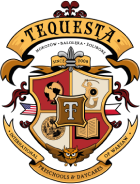Have you ever wondered why children can spend hours building with blocks, cardboard boxes, or sticks, forgetting about the entire world around them? It’s not just carefree fun. Constructive play—any activity in which a child constructs objects independently—is one of the most effective ways to shape logical thinking from the earliest years!
What Exactly Is Constructive Play?
The term covers all forms of arranging, connecting, and building: classic blocks (wooden, plastic, magnetic), train tracks, DIY kits, and even pillow or cardboard–box forts. The key is that the child chooses the elements on their own and tests “what will happen.” There is no single right solution—what matters is the process and the experience.
Why Does Building Support Logic?
- Sequencing
A child must decide in which order to place blocks so the structure stays stable. They practise step-by-step planning—an essential skill later used in reading, writing, and solving math problems. - Cause-and-Effect Reasoning
If the tower topples, the little builder analyses why: Was the base too narrow? Was a block crooked? It’s a natural workout in “if–then” thinking. - Classification and Categorisation
Sorting pieces by colour, shape, or size develops pattern recognition. The same competence helps in organising information and understanding grammar rules. - Spatial Imagination
By building in 3-D, children learn to judge distance, proportion, and symmetry. That’s the foundation not only of geometry but of everyday tasks—like parking a balance bike between others at the playground. - Flexible Thinking
When a plan fails, the builder must change it. This corrective practice prepares the child to look for new strategies in many life situations.
How to Encourage Building at Home?
- Provide Varied Materials
You don’t need fancy kits. A shoe box can become a garage, and toilet-paper rolls can turn into skyscrapers. Diversity of shapes and textures sparks creativity. - Avoid Imposing Ready-Made Schemas
From an adult perspective it’s “better” to start with a solid base. Let the child experiment instead. A collapsed tower is a valuable lesson. - Ask Questions Instead of Giving Answers
Rather than saying, “Put a bigger block at the bottom,” try, “What will happen if you place the heavier block on the very top?” Open questions foster independent reasoning. - Combine Building with Storytelling
“Let’s build a city where your favourite heroes live.” Narration grows vocabulary and links logic with emotion. - Use English During Play
Colour names, shapes, or verbs like stack, build, balance introduced while acting stick in memory far faster than during a “dry” language lesson.
Constructive Play at TEQUESTA
Building is a daily staple in our preschool. We use many kinds of blocks, STEM (Science-Technology-Engineering-Math) kits, and recycled materials. Teachers—both native English speakers and Polish specialists—facilitate the activity, weaving in English vocabulary and problem questions:
- “How many blocks do you need for a stable bridge?”
- “Which shape is stronger—a triangle or a square?”
In this way, children learn logical thinking in two languages simultaneously.
Frequently Asked Questions from Parents
My child gets frustrated quickly when the structure collapses—what can I do?
Show that failure is part of learning. Together name the problem (“The tower was tall but narrow”) and suggest a fix. Praise the effort, not just the final result.
Are construction toys only for future engineers?
Absolutely not! Logical thinking benefits everyone—from artists to athletes. The key is exercising the brain in planning and analysis.
Constructive play is much more than stacking blocks. It’s a natural laboratory where a child tests hypotheses, observes outcomes, and learns flexible action. At TEQUESTA we believe a Little Explorer spreads their wings when they can create and improve projects independently in a safe, inspiring atmosphere. We encourage you to introduce simple building activities at home—just a few blocks, a bit of time, and a generous dose of curious questions. Logical thinking will build itself!


